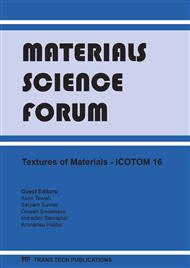p.912
p.916
p.920
p.924
p.928
p.932
p.939
p.943
p.947
Influence of Additives on Texture Development of Submicro- and Nanocrystalline Nickel
Abstract:
Organic additives such as saccharin have been frequently used in electroplating operations to moderate deposit growth rates and to control film quality. In this study, texture development upon annealing of pulse-electroplated Nickel produced without additives is analyzed by use of electron backscatter diffraction technique. Plating without additives results in a microstructure with slightly elongated grains and a fibre texture in growth direction and this texture is conserved upon annealing up to 600°C. Structural units in form of groups of elongated grains possessing a common zone axis in growth direction and twin relationships between themselves are found in the microstructure. For revealing the influence of additives, the observations are compared with results obtained for Ni and Ni-Fe plated in the presence of additives where during abnormal grain growth the initial fibre texture changes to an energetically more favourable texture by twinning. The lack of additives is assumed to be responsible for the observed differences in texture and microstructure development.
Info:
Periodical:
Pages:
928-931
Citation:
Online since:
December 2011
Authors:
Keywords:
Price:
Сopyright:
© 2012 Trans Tech Publications Ltd. All Rights Reserved
Share:
Citation:


